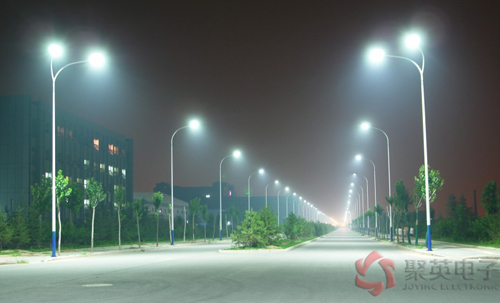On June 7, the installation of the second batch of 42 natural illumination acquisition terminals (street lamp remote monitoring) of Beijing urban lighting management center was completed. With the first batch of 16 acquisition terminals installed in the pilot last year, 58 acquisition terminals have been installed in the six urban areas of central Beijing.
The natural illuminance acquisition terminal monitors the pavement and will transmit data information to Beijing urban lighting monitoring and command center at any time according to the change of natural illuminance. Under special weather conditions such as rain, snow and fog, the urban lighting management center can turn on or turn off the lights in advance according to the illumination information.
It is understood that after the installation of the natural illumination acquisition terminal is completed, it will immediately enter the two-month benchmark test stage. Previously, the fixed reference value of 30 lux was used as the standard for emergency switching lights, but it was found in the pilot that there were defects in taking the fixed reference value as the reference due to the geographical location, environment, shadow blocking and other reasons of each test point. The benchmark value test carried out this time is to take the original time of switching lights as the test time point, collect the on-site illumination value at the time of switching lights at a fixed place within a period of time, and take the average value of multiple collected values as the benchmark value. Therefore, the reference value of switching lights in each region will be different, which will be more accurate and scientific.
The working principle of the natural illuminance acquisition terminal is to collect the illuminance information through the external photosensitive probe and transmit it to the acquisition terminal through the data line. The acquisition unit of the acquisition terminal converts it into a digital signal, transmits it to the 3G router, and then sends the signal back to the monitoring background through the wireless network. The background operates and controls according to the reference value.
The 42 natural illumination acquisition terminals installed this year are new instruments (remote street lamp control system rtu6640). Compared with last year's instruments, the data accuracy is from 0.1 to 0.01, the volatility is reduced and the data stability is stronger. This year's installation scope is still in the six districts of the city. The installation quantity is increased and the location is more scientific. Two instruments are installed at each of the 21 test points for simultaneous monitoring, which increases the reliability of the data.
In April last year, the urban lighting management center began to pilot install 16 sets of natural light acquisition terminals in the central six city districts of Beijing, including one in each of the four central points of the second ring road and the Fifth Ring Road, one in each of the four corners of the Fourth Ring Road, one in Shijingshan District and Haidian District outside the Fifth Ring Road, and two in Chaoyang District. The results of one-year pilot use show that remote control of street lamps in a certain area according to the collected information of the acquisition terminal can realize more scientific and accurate control of street lamp switches and meet the road lighting needs of citizens under different weather conditions.

"Eagle eye" technology is the most advanced in China
What is the natural illuminance acquisition terminal commonly known as "eagle eye"? The reporter saw that a set of "eagle eye" is composed of two pieces of equipment, a square plastic box less than the size of the palm, with a white button on it. "This is a photosensitive probe." Zhou Youyao, a specialist in natural illumination remote acquisition system, said. Another device is a bit like a household electricity meter. In fact, it is equipped with "photosensitive acquisition terminal" and 3G router.
"This set of equipment is the most advanced technical means in China." Zhou Youyao said that the photosensitive probe transmits the collected illumination information to the acquisition unit of the acquisition terminal through the data line, and converts it into a digital signal and transmits it to the 3G router. The 3G router sends the signal back to the monitoring background through the wireless network. Under special weather conditions such as rain, snow and fog, the urban lighting management center can turn on the lights in advance or turn off the lights later according to the illumination information.
The six districts of the city are evenly distributed and fully covered
Last April, the urban lighting management center began to install 16 natural illumination acquisition terminals in 6 urban areas of Beijing. Among them, one is installed at the four central points of the second ring road and the Fifth Ring Road, one at the four corners of the Fourth Ring Road, one at Shijingshan and Haidian outside the Fifth Ring Road and two in Chaoyang District. After the installation of the second batch of 42 natural illumination acquisition terminals this year, the "eagle eye" in the six districts of the city is generally evenly distributed, and one "eagle eye" roughly covers 70 street lamp control points around.
"The pilot application results over the past year show that remote control of street lamps in a certain area according to the information collected by 'eagle eye' can realize more scientific and humanized switching of street lamps." In the pilot, technicians found that due to the geographical location, environment, shadow blocking and other reasons of each test point, there were defects with the fixed reference value as the reference.
Therefore, the benchmark value test this time will take the original time of turning on and off the lights as the test time point, collect the on-site illumination value at the time of turning on and off the lights at a fixed place within a period of time, and take the average value of multiple collected values as the benchmark value. In this way, the reference value of each region will be different, and the humanized switch lamp will be more scientific.
The whole city may be officially opened from August
After the installation of 58 "eagle eyes", it will enter the benchmark value test stage for two months. Around August, "eagle eye" will be officially put into use after the completion of the test.
The street lamp customer service center said that the switching time of street lamps in the urban area is different every day. Under normal circumstances, the street lamps are automatically turned on and off according to the "annual automatic switching schedule". This schedule is based on the "civil morning and dusk shadowing time" provided by the National Astronomical Observatory, and is tested and calculated by scientific means according to the geographical location of Beijing and the change of sunrise and sunset time every day, and in accordance with the provisions of road lighting standards.
However, in case of some abnormal conditions, such as rain, snow, fog and other bad weather, the street lamp center will timely grasp the changes of weather brightness and natural illumination through the natural illumination remote acquisition system, so as to provide better technical support for the humanized switching of street lamps in the street lamp center.
"At this time, 58 natural illuminance acquisition terminals will show their skills. Once the illuminance information of an area is higher than the standard value of street lamp off - 30 lux, the street lamp center will remotely operate the area to turn off the street lamps. On the contrary, when the illuminance is lower than 30 Lux, the street lamps will be turned on remotely.

 Manager Wang
Manager Wang
 OfficialAccounts
OfficialAccounts